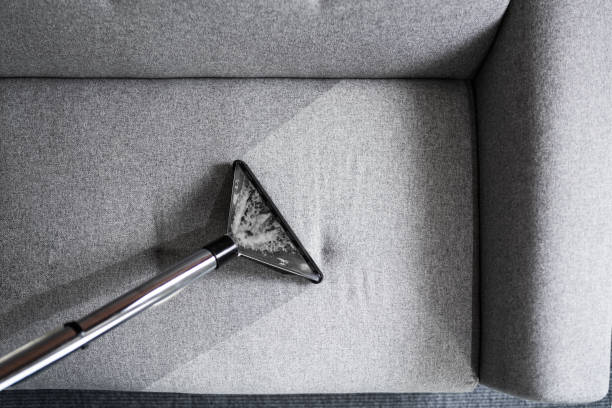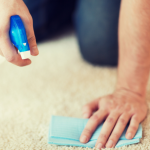
How Do I Get Oil Out of My Carpet? Quick and Easy Cleaning Tips
February 12, 2025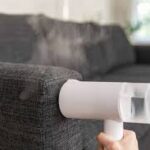
Common Carpet Cleaning Questions Answered
March 26, 2025Your sofa is one of the most used pieces of furniture in your home. Over time, it collects dust, stains, and odors, making regular cleaning essential to keep it fresh and long-lasting.
The good news? You don’t need professionals to do it. Follow these simple DIY cleaning steps to remove stains, eliminate odors, and refresh your sofa efficiently.
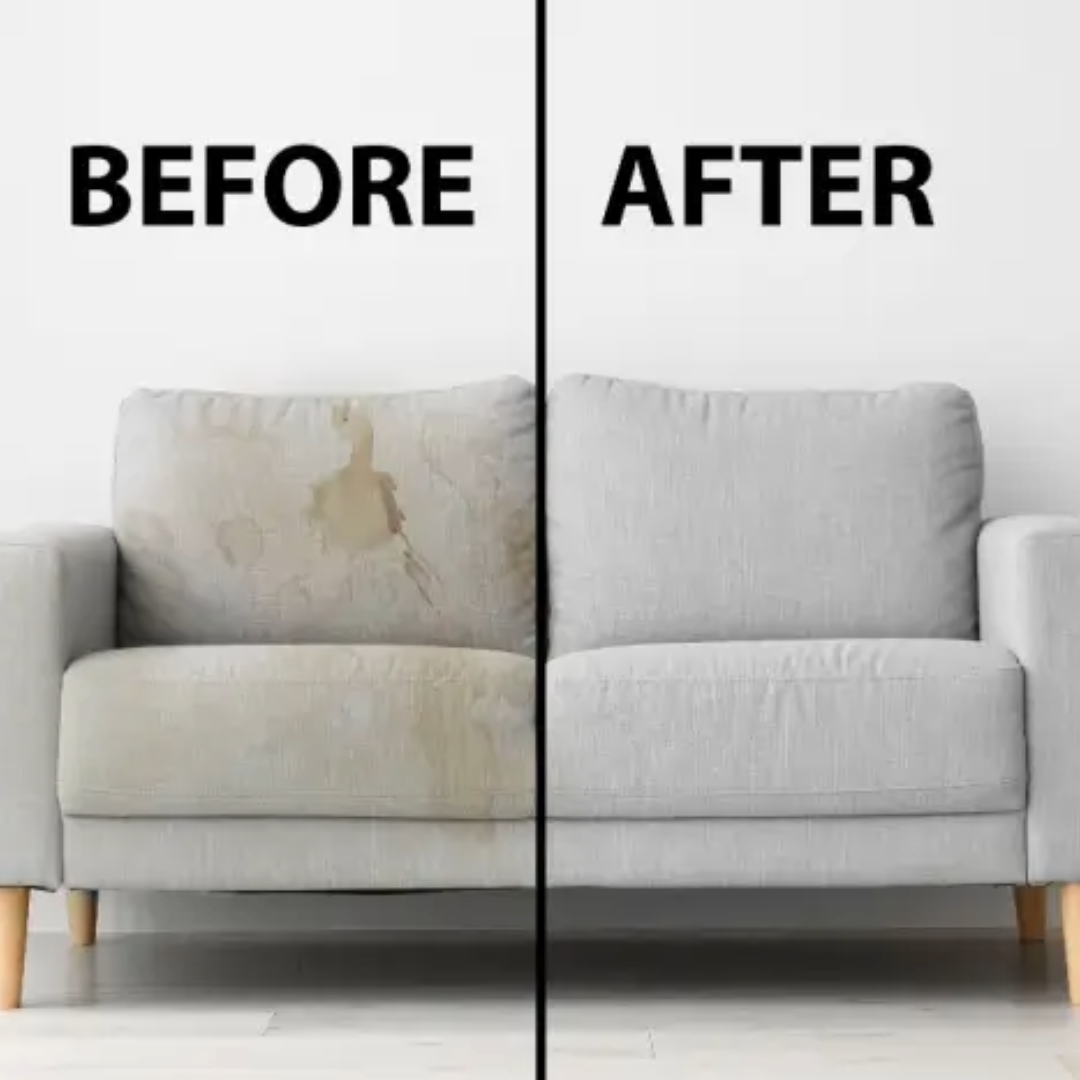
Step 1: Identify the Fabric Type
Before you start cleaning, check the care label on your sofa. This label provides specific instructions based on the fabric type:
- W – Safe to clean with water-based cleaners (mild detergent or fabric sofa cleaner).
- S – Requires solvent-based cleaners; professional dry cleaning is recommended.
- WS – Can be cleaned with both water and solvent-based cleaners.
- X – Vacuum only; avoid any liquid cleaning agents.
If your sofa is labeled W or WS, you can proceed with DIY cleaning. If it’s S or X, stick to vacuuming or call a professional.

Step 2: Preparation
Gather these supplies before you begin:
- Vacuum cleaner (with an upholstery attachment)
- Mild detergent or natural soap
- White vinegar and baking soda
- Microfiber cloths or sponges
- Soft-bristle brush
- Spray bottle
- Steam cleaner (optional but highly effective)
Step 3: Vacuuming
Remove loose dust, pet hair, and debris before deep cleaning.
- Use the upholstery attachment to clean all fabric surfaces.
- Remove and vacuum cushions separately.
- Use a crevice tool to reach hidden areas and seams.
For deeper cleaning, sprinkle baking soda over the fabric before vacuuming to absorb odors.

Step 4: Spot and Stain Removal
Tackle stains with the right method:
- General stains – Mix equal parts water and white vinegar. Spray, blot with a microfiber cloth, and let dry.
- Grease stains – Sprinkle baking soda over the stain, let sit for 15 minutes, then vacuum.
- Ink stains – Dab rubbing alcohol onto the stain using a cotton ball, then blot gently.
- Pet stains and odors – Mix one part hydrogen peroxide with two parts water and apply to the affected area. Blot with a clean cloth.
Avoid scrubbing, as it can spread stains or damage the fabric.
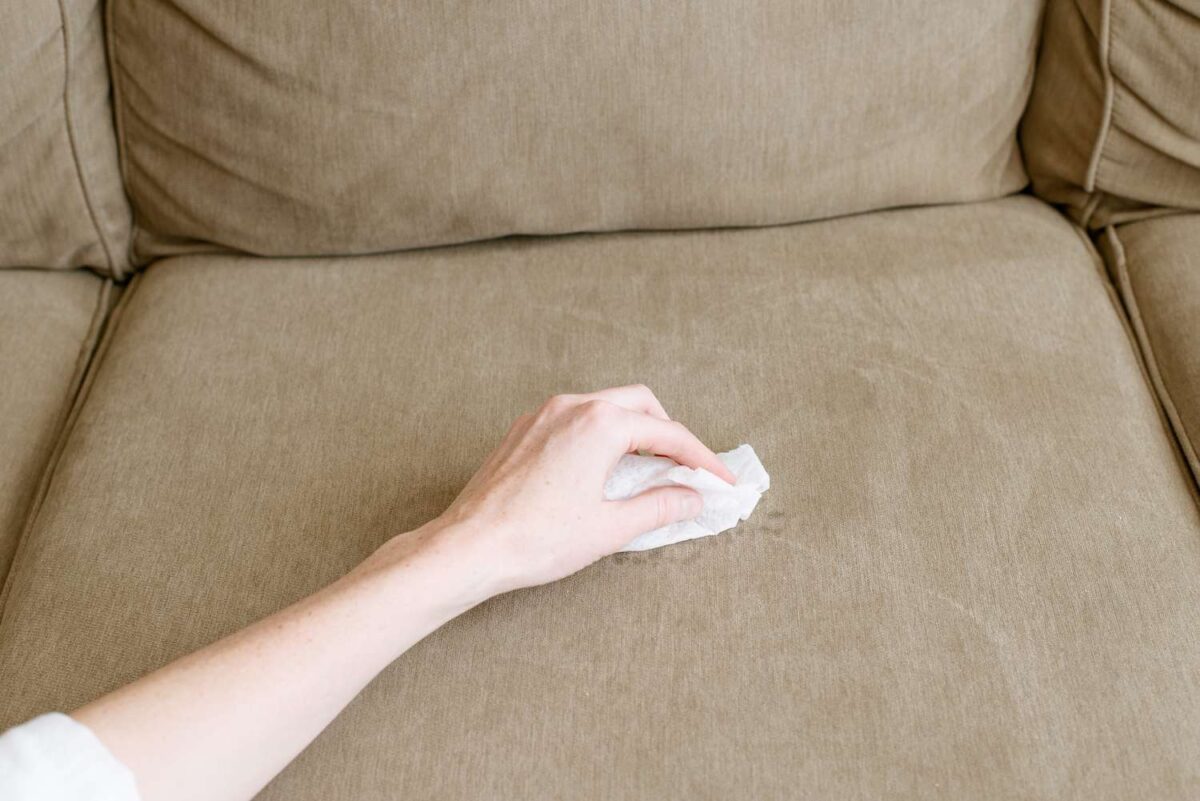
Step 5: Deep Cleaning the Sofa
Now that stains are removed, clean the entire sofa.
DIY Cleaning Solution:
Mix in a spray bottle:
- 2 cups warm water
- 1 tablespoon white vinegar
- 1 teaspoon mild detergent or castile soap
- (Optional) A few drops of essential oil for a fresh scent
- Lightly mist the sofa with the solution—avoid soaking the fabric.
- Wipe in circular motions with a soft cloth or sponge.
- Use a damp cloth to remove excess soap residue.
Step 6: Steam Cleaning (Optional but Recommended)
A steam cleaner can remove deep-set dirt and bacteria.
- Fill with water and recommended upholstery cleaner.
- Use the upholstery attachment and work in small sections.
- Let the sofa air-dry completely before using.
Why Steam Cleaning?
- Kills bacteria and dust mites.
- Removes deep stains and odors.
- No harsh chemicals needed.

Step 7: Drying the Sofa Properly
A damp sofa can lead to mold or mildew. Speed up drying with these tips:
- Open windows or turn on a fan.
- Use a dehumidifier in humid conditions.
- Avoid direct sunlight to prevent fabric fading.
Bonus Tip: Prevent Future Stains and Odors
- Use a fabric protector spray to repel spills.
- Place washable throws or slipcovers over high-traffic areas.
- Vacuum weekly to prevent dust buildup.
- Avoid eating or drinking on the sofa to reduce spills.
Final Thoughts
A clean sofa is a fresh, inviting centerpiece for your home. With these easy DIY steps, you can keep your furniture looking and smelling great all year round.
For professional deep cleaning, contact VI Premier Carpet Cleaning. Our upholstery specialists can restore your sofa to its best condition.
Call us today at 250-323-1010 to schedule an appointment. Your sofa deserves the best care.

